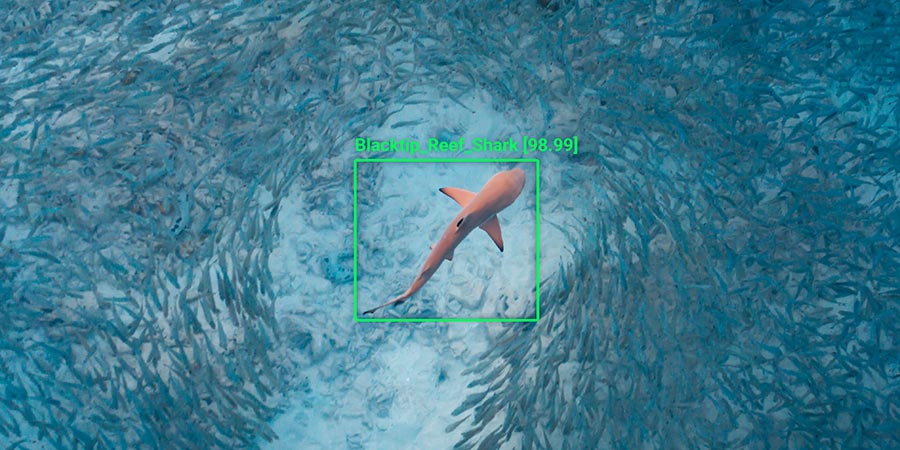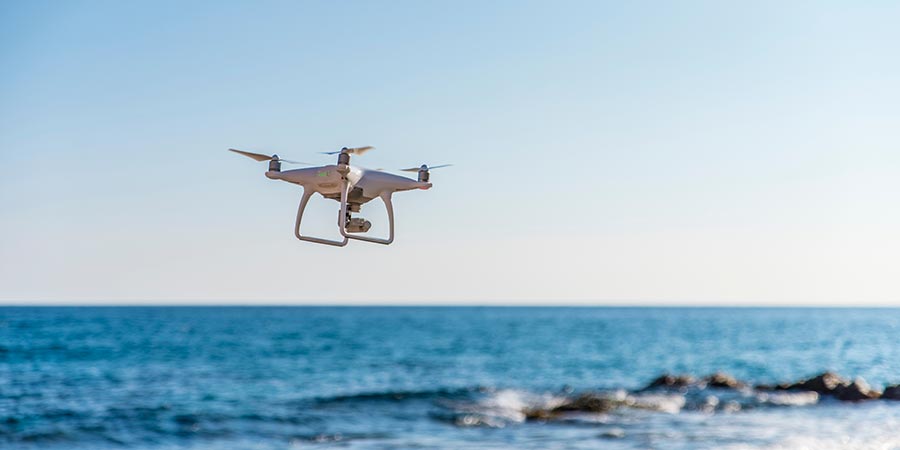HOME / Applications / Smarter and Safer Shores: AI-Powered Drones Are Transforming Shark Detection
Smarter and Safer Shores: AI-Powered Drones Are Transforming Shark Detection

Beach lifeguards monitor for sharks spotting towers, and binoculars to scan the water from the beach, looking for signs like fins or unusual fish behavior. However, murky water or depth makes detection challenging. Despite precautions, sharks can approach unexpectedly, making it difficult to prevent encounters entirely.
Shark-eye drone technology attaches a miniaturized AI computer to enhance shark detection by utilizing high-resolution cameras and AI-powered analytics. The drone can quickly scan waters from above, identifying sharks, schools of fish (small fishes gather to fend off predators), and unusual movements that may indicate shark presence. By improving visibility, especially in murky or deep waters, this real-time data allows lifeguards to respond faster and clear areas of potential danger.
A Shark-eye drone with an edge AI computer significantly increases the detection of nearby sharks, providing a more proactive approach to beach safety

The integrated miniaturized computer, Neousys FLYC-300 weighs only 298 grams, compatible with 4S to 14S battery via XT30 DC-in connector. Powered by NVIDIA® Jetson, it offers up to 100 TOPS AI computation, and has rich connectivity and expansion such as 5G/ 4G, ideal for real-time video analytics applications such as drone imagery collection and environmental monitoring in shark detection.
FLYC-300 also features configurable Universal Asynchronous Receiver/ Transmitter (UART) that can communicate seamlessly with the flight controller. And as always, every Neousys system is created from the ground-up and features Neousys rugged DNA that’s tested and proven in the field to withstand varying environmental conditions, making them suitable for a variety of deployment scenarios.
The integration of Shark-eye drones equipped with the lightweight Neousys FLYC-300 AI computer marks a significant advancement in beach safety. By combining high-resolution aerial imaging with powerful edge AI analytics, lifeguards gain a reliable tool to detect sharks more quickly and accurately—even in challenging conditions like murky or deep waters. The system’s real-time data and rugged design ensure it can operate effectively in diverse environments, providing a proactive solution to minimize unexpected shark encounters and enhance swimmer protection.
